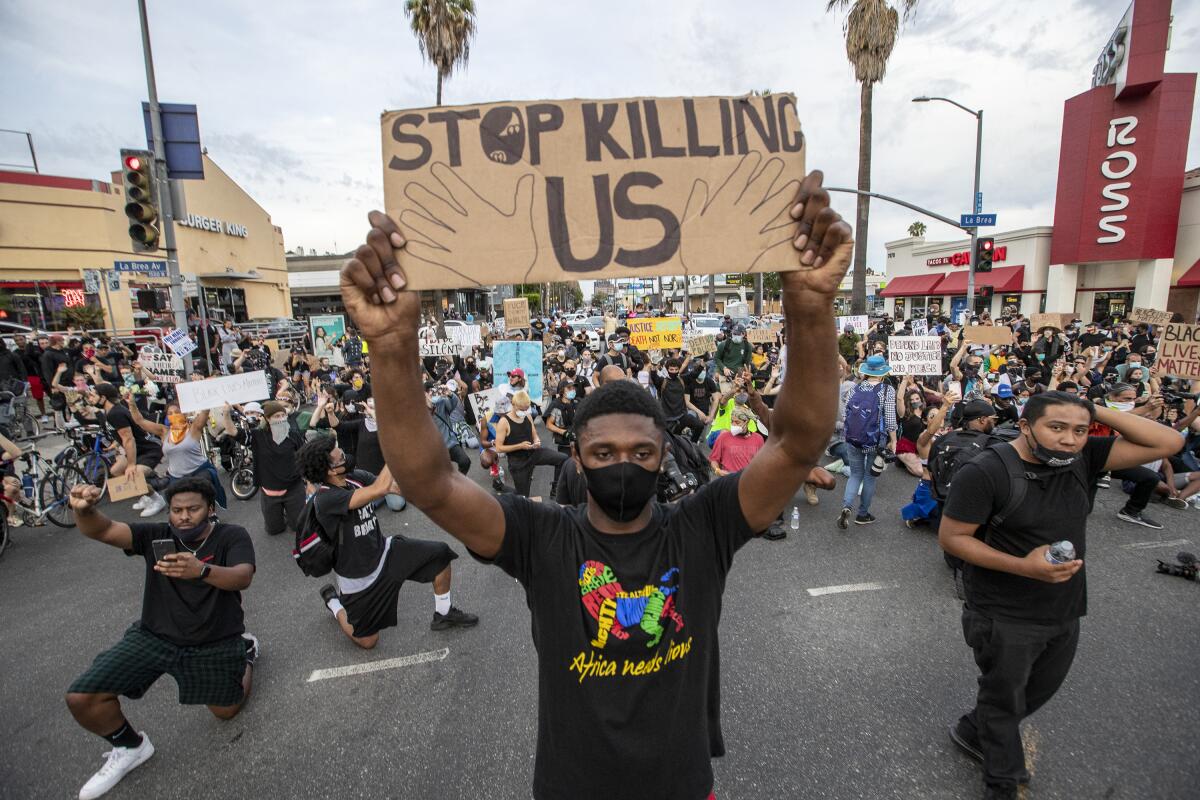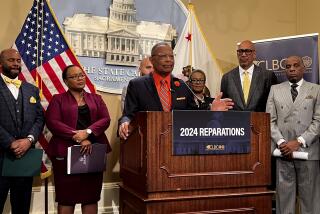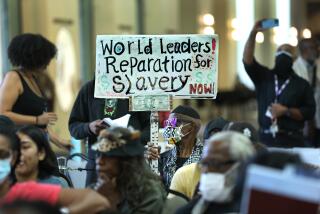Editorial: Seven things Californians can do right now to fight structural racism

- Share via
Fueled by anger, fear and dread, protesters continue to flood the streets to demand justice not only for the killing of George Floyd, but an end to the deep systemic racism that has allowed police brutality and day-in, day-out discrimination to endure. The protests are being driven by young people — of all ethnic and racial backgrounds — who are demanding a more just nation. We would be a foolish, hard-hearted society if we ignored their call to action.
What, then, can Californians do to address the issues and inequities brought up by the demonstrations? We asked activists, academics and elected leaders to suggest some actions that could be taken immediately by individuals and institutions. These are just a few ideas, and we welcome hearing more from you.Racism: Admit it, own it
Racism is here and we are all — wittingly or not — steeped in it. Our society has not valued black and brown lives equally to white lives, which is why we continue to have glaring racial disparities in health, income, education and opportunities. We have to acknowledge that oppression and racial injustice are ingrained into the American experience. And we have to challenge the ways that racism pervades our assumptions, our fears, our expectations. Otherwise we are doomed to repeat the pain and suffering that the country is experiencing now.Talk about racism and how to be antiracist
Of course, it’s not enough to simply acknowledge the racism baked into our culture. We have to be open, intellectually and emotionally, to discussions of how racism affects peoples’ lives, even in subconscious ways. These are challenging but vital conversations. Seek them out, whether in formal settings, such as the kind of mediated conversations on race that Days of Dialogue started after the O.J. Simpson verdict in 1995, or informal ones, such as book clubs focused on authors of color and books on race. Put your money where your mouth is
It’s impossible to separate the nation’s history of racial injustice with the wealth gap we see today, in which a typical white family’s net worth is nearly 10 times that of a typical black family. The cumulative impact of slavery, redlining, housing and job discrimination and predatory lending have all conspired to depress economic opportunity and wealth accumulation in black and brown communities.
Solving these problems will require major structural economic reforms. In the meantime, individuals can make a statement with their dollars by supporting minority-owned businesses, donating to advocacy groups and giving to mutual-aid networks that can provide emergency assistance to help vulnerable community members stay housed, fed and solvent.Fight racism with education
If we can teach today’s students to understand systemic racism and our individual roles in perpetuating it, then perhaps we’ll have fewer future adults saying things like, “It was just a rogue cop.”
California’s first attempt at creating an ethnic studies course for high schools was scrapped after it produced a blobby mess of impenetrable jargon. Nevertheless, the state still needs an ethnic studies curriculum to help imbue students with an understanding of their own history and that of others. There’s no reason to wait until high school or college, either (one proposal in the Legislature would add an ethnic studies requirement to California State University degrees). Lessons about these issues in U.S. history and current events, as well as how to identify the implicit biases we all have, should be embedded into learning, beginning in elementary school.Stop COVID-19 from ravaging black communities
In California, African-Americans account for 6% of the state’s population and 10% percent of the COVID-19 deaths. It’s a statistical outlier in a state where Latinos and Asians are dying from COVID-19 in percentages roughly equal to their share of the state’s population and white people are dying at a lower rate, most likely because they tend to be wealthier and have better access to healthcare.
This is not an accident, but the inevitable outcome of centuries of unchecked systemic racism that has denied African Americans the same economic opportunities as white Americans and limited their access to heathcare and social safety nets. African Americans also tend to work in “essential” jobs that put them at higher risk for contracting the virus.
This uneven death toll must be addressed now. And it can be. The Advancement Project and other local community groups have developed a model to be deployed in Los Angeles, and the premise is simple: Commit public-health resources to substantially increase testing, public education, culturally appropriate contact tracing, protective supplies, and follow-up care — and vaccines, if and when they become available — in the communities hardest hit by COVID-19 cases. It makes sense to devote a proportionate share of pandemic resources to those battling the disease. This could, and should, show the rest of the state how to address COVID-19 and other racial disparities in health.Invest in California’s communities of color
It seems counterintuitive, especially when California’s leaders are currently grappling with deficit as high as $54 billion in next year’s budget. But we need to get money flowing to the communities hit hardest by the COVID-19 pandemic shutdowns and by state budget cuts. And we need to do it immediately.
One idea for how to do that comes from California Forward, a nonpartisan good-government organization focused on shared prosperity: Harness the some $34 billion already approved by voters for infrastructure projects, but still unspent. Legislators should create a process to identify and green light “shovel-ready” projects in low-income communities of color on an expedited timetable. This would have a multipronged benefit: creating well-paying jobs for those left unemployed by the pandemic, boosting economic activity (and with it, tax revenue) and righting a historical wrong of underinvestment in communities of color.House more black homeless people
You need look no further than the streets of Los Angeles County to see the longstanding effects of racism. Last year’s count found that 33% of the homeless people on the streets are black; they make up 58% of the homeless living in the skid row neighborhood, though they account for less than 10% of the county’s population.
Black people who are homeless should be housed at the same rate. Currently, 32% of the homeless people being housed in hotels and motels during the pandemic under the Project Roomkey program are black. That’s good. But that equity needs to continue as the county moves people from hotels into longer term housing.
More to Read
A cure for the common opinion
Get thought-provoking perspectives with our weekly newsletter.
You may occasionally receive promotional content from the Los Angeles Times.










